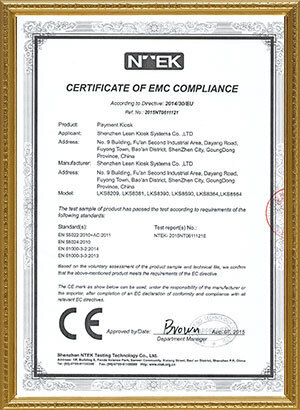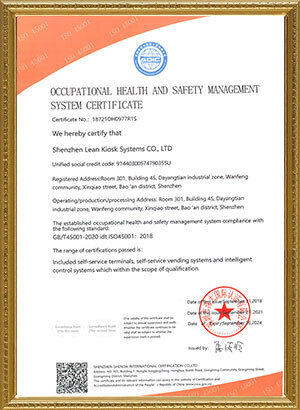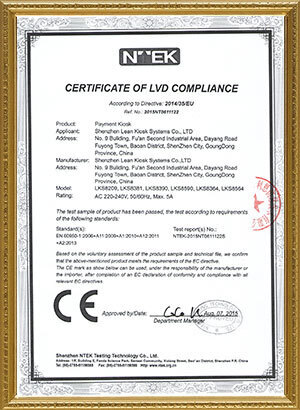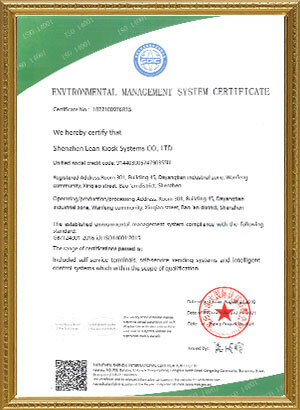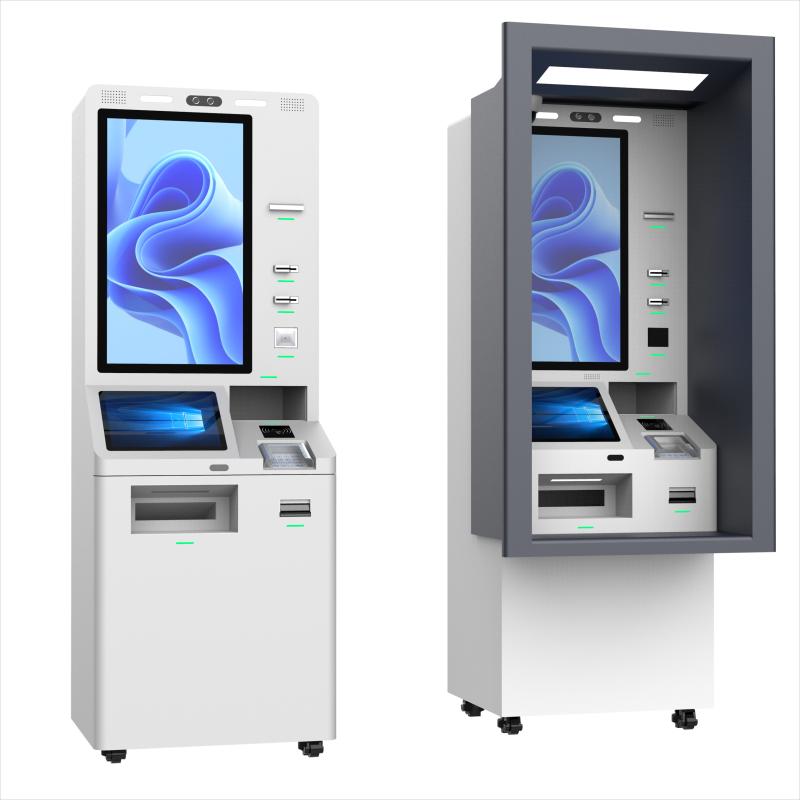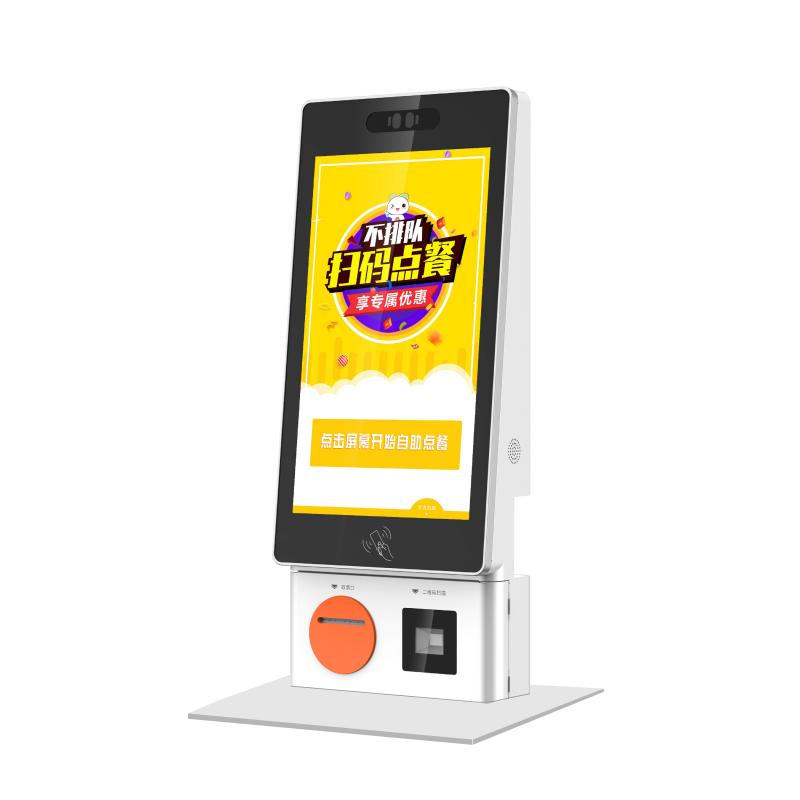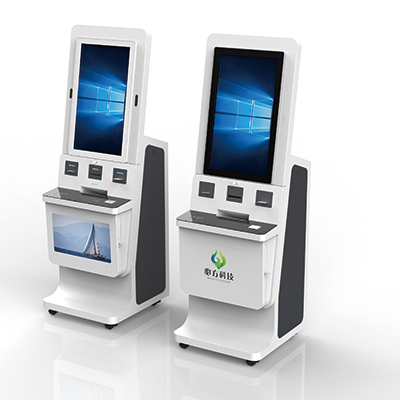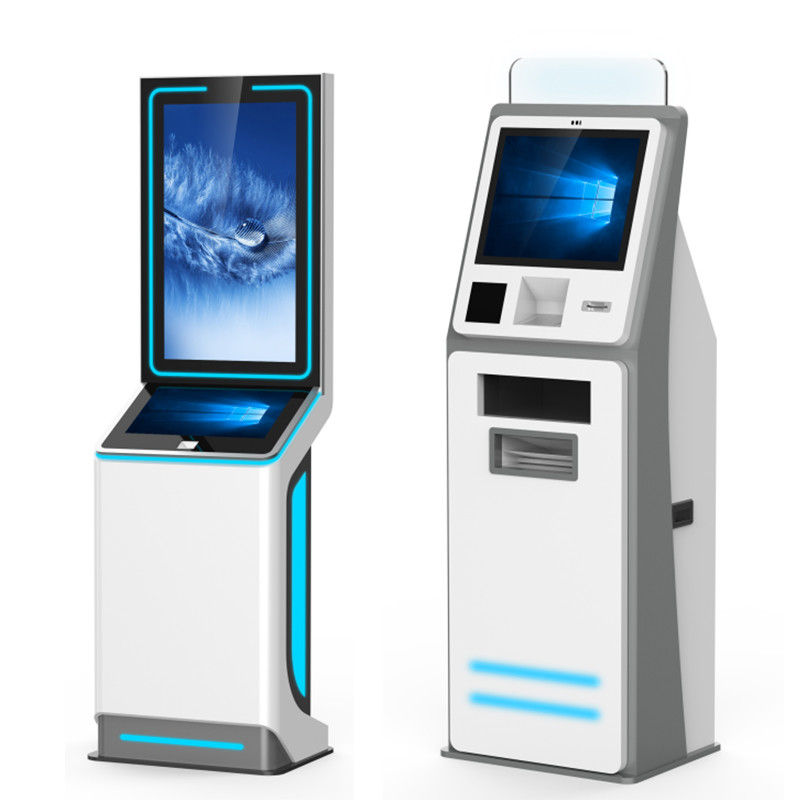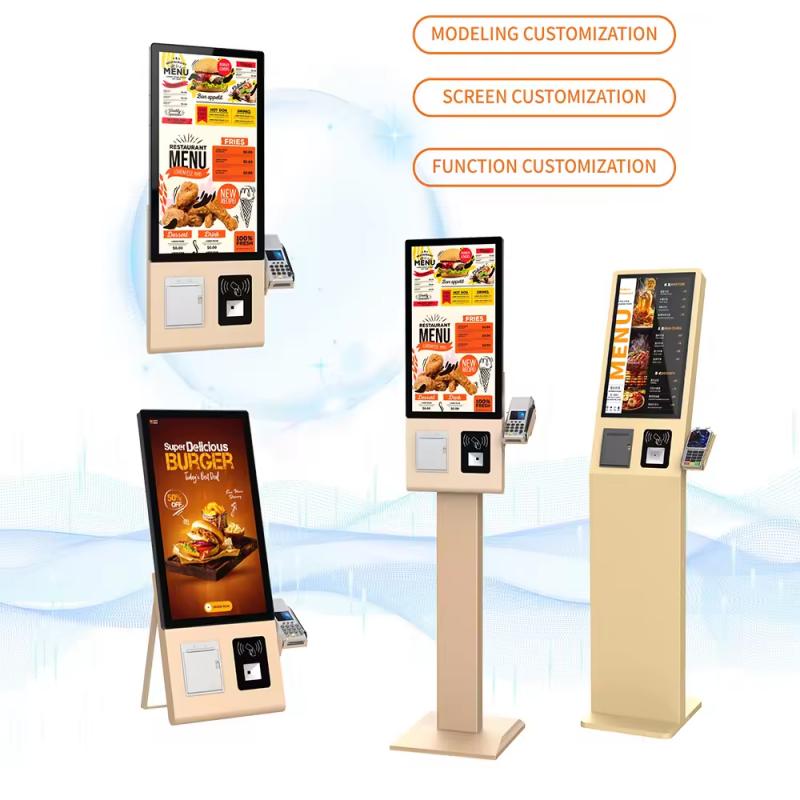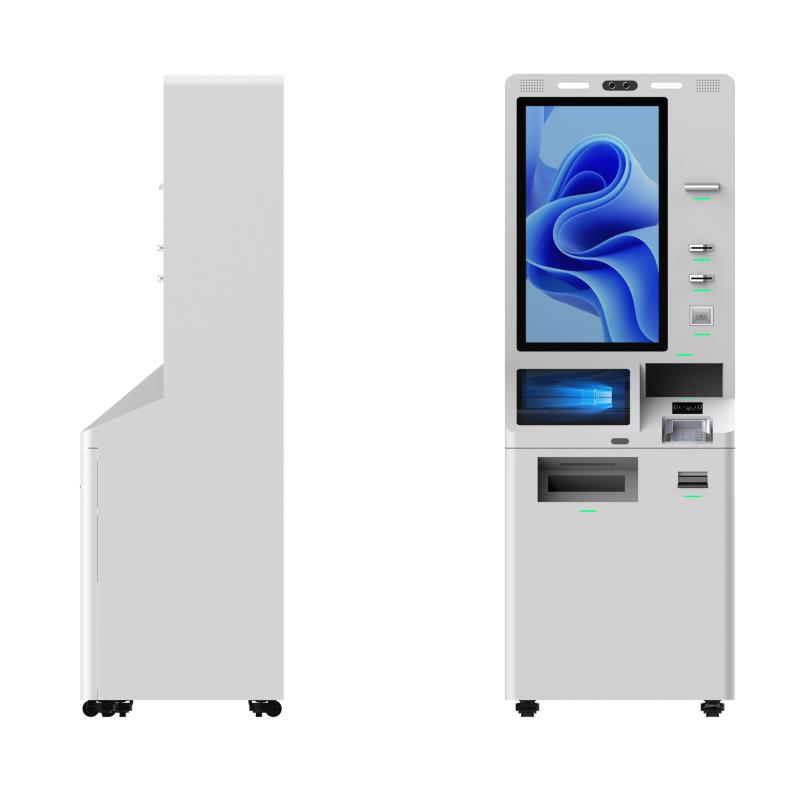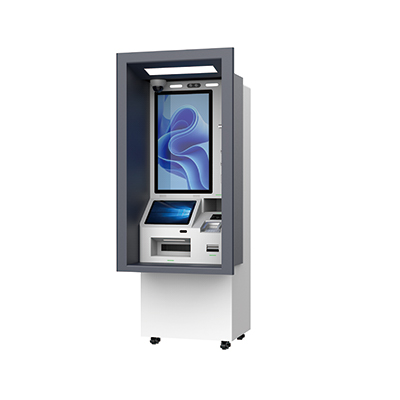





What is bill payment kiosk
Bill payment kiosk definition
Bill payment kiosk is a self-service kiosk designed to facilitate quick and secure bill payments. It allows users to pay utility bills, credit card bills, rent, and other obligations without needing assistance from a cashier. Equipped with features like a touchscreen, cash and card acceptors, barcode scanners, and printers, it supports various payment methods including cash, credit/debit cards, and mobile payments. These kiosks are commonly placed in convenient locations such as malls, grocery stores, and transit hubs, providing a 24/7, user-friendly solution for managing financial obligations efficiently.
What are the key features of bill payment kiosk
|
|
Components and specifications for a bill payment kiosk
| Component | Detailed Introduction | Specifications |
|---|---|---|
| Touchscreen Display | Primary interface for user interaction, allowing selection of payment options, data entry, and transaction completion. | Size: 15" to 32" Type: Capacitive or resistive touchscreen Resolution: 1080p to 4K Brightness: 300 to 1000 nits (outdoor kiosks require higher brightness) |
| Payment Terminal | Device for processing credit/debit card transactions, supporting chip, magnetic stripe, and contactless NFC payments. | Type: EMV-compliant Card Reader: Chip, magnetic stripe, and NFC Connectivity: USB, RS232, or Ethernet |
| Printer | Issues receipts after transactions, typically using thermal printing technology for speed and reliability. | Type: Thermal printer Paper Width: 58mm or 80mm Printing Speed: 150mm/s to 250mm/s |
| Cash Acceptor | Accepts and verifies banknotes, ensuring that only authentic currency is processed. | Capacity: 500 to 1500 notes Validation Speed: ~3 seconds per note Accepted Currencies: Configurable based on geographic location |
| Coin Acceptor | Accepts and validates coins, ensuring accurate payment processing in cash transactions. | Capacity: 300 to 600 coins Coin Types: Configurable for specific denominations Validation Speed: ~3 coins per second |
| Barcode Scanner | Scans barcodes and QR codes, enabling quick data entry, such as bill details or loyalty programs. | Type: 2D imager Scan Speed: 60 to 100 scans per second Connectivity: USB or RS232 |
| Receipt Dispenser | Distributes printed receipts to users after successful transactions. | Capacity: 500 to 1000 receipts Paper Type: Thermal paper |
| CPU/Processor | Central processing unit that controls the kiosk's operations, ensuring efficient performance and transaction handling. | Type: Intel i5 or i7 (or equivalent) RAM: 8GB to 16GB Storage: 128GB SSD or higher |
| Operating System | Manages the kiosk’s software and hardware, enabling smooth transaction processing and user interaction. | Type: Windows 10 IoT, Linux, or Android |
| Enclosure/Chassis | Outer casing that protects internal components from damage, tampering, and environmental factors, often customizable for branding. | Material: Steel or aluminum Finish: Powder-coated, customizable colors Weatherproofing: IP54 to IP65 (for outdoor models) |
| Security Camera | Monitors and records activity around the kiosk, enhancing security and deterring vandalism. | Type: HD or Full HD Connectivity: Ethernet or USB Features: Motion detection, night vision |
| Power Supply | Provides electrical power to the kiosk, converting AC to DC power as needed by the components, with optional battery backup. | Input Voltage: 110V or 220V AC Output Voltage: 12V or 24V DC Battery Backup: Optional, up to 4 hours operation |
| Cooling System | Maintains internal temperature, preventing overheating of components, especially in outdoor or high-usage environments. | Type: Fan-based or Peltier cooling Operating Temperature: -20°C to 50°C |
| Connectivity Options | Ensures network connectivity for transaction processing, updates, and communication with central systems. | Type: Ethernet, Wi-Fi, 4G/5G Ports: USB, HDMI, Ethernet, RS232 |
| Software Interface | User-facing software that provides the graphical interface for interactions, often customized for specific applications. | Type: Customizable UI/UX Payment Gateway Integration: Supports major gateways like Stripe, PayPal |
| Accessibility Features | Ensures usability for all individuals, including those with disabilities, to comply with regulations and enhance inclusivity. | Features: ADA-compliant height/reach, audio support, Braille keypads |
| Maintenance Access | Provides secure and easy access to internal components for technicians, facilitating maintenance and reducing downtime. | Access Points: Lockable panels/doors Ease of Use: Designed for quick access Security: Keyed locks or electronic access control |
| Lighting | Enhances visibility of the kiosk in low-light conditions, with options for backlit signage and halo lighting around key areas. | Type: LED lighting Brightness: Adjustable Features: Backlit signage, halo lighting |
| Speaker/Microphone | Allows for audio interaction, including voice commands, audible confirmations, or customer service communication. | Speaker: Built-in, high-quality Microphone: Sensitive with noise-canceling options Features: Voice commands, customer service calls |
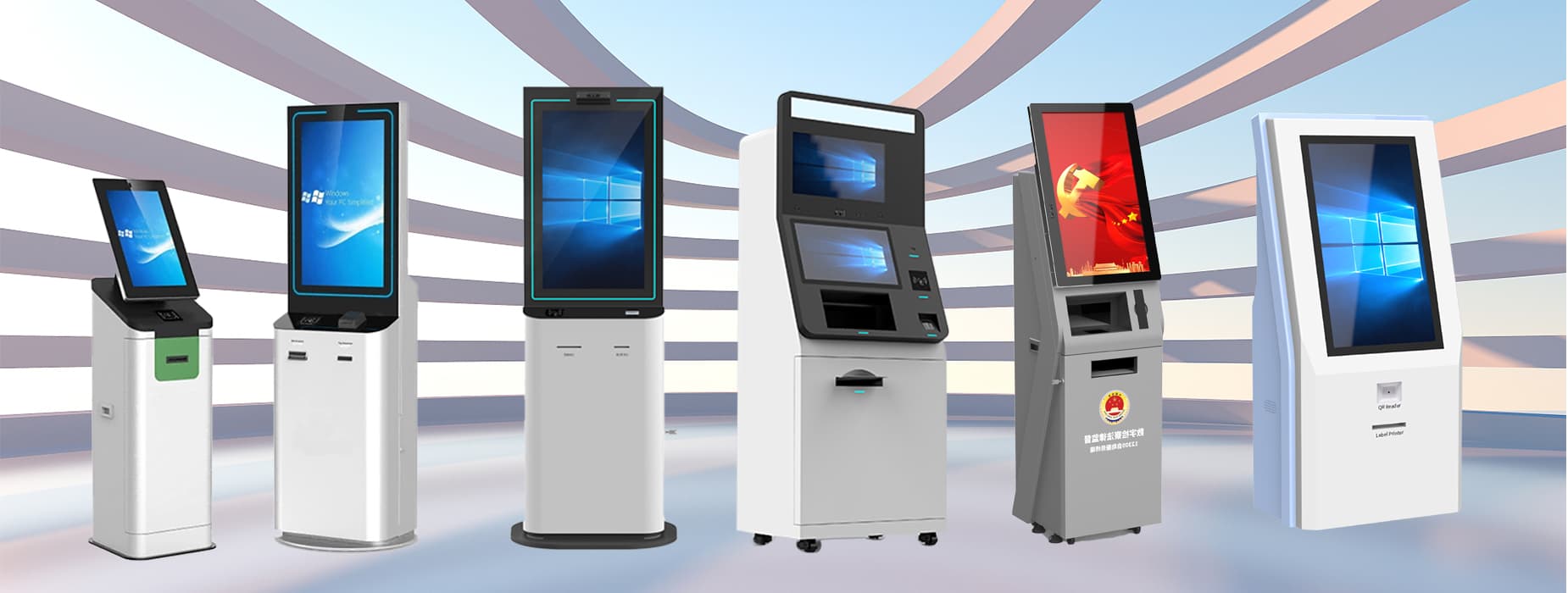
Common types and sizes of bill payment kiosk on the market
| Kiosk Type | Description | Common Sizes (H x W x D) | Key Features | Typical Applications |
|---|---|---|---|---|
| Wall-Mounted Kiosk | A compact kiosk that is mounted on a wall, ideal for locations with limited space. | Size 1: 30" x 20" x 8" Size 2: 40" x 22" x 10" | Space-saving design, suitable for indoor use, lower installation cost, easy to access. | Small businesses, retail stores, offices |
| Freestanding Kiosk | A standalone kiosk with a robust structure, offering flexibility in placement and more space for hardware components. | Size 1: 60" x 24" x 18" Size 2: 70" x 26" x 20" | Large touchscreen, higher capacity for cash/coin acceptors, customizable branding options. | Malls, airports, transportation hubs |
| Outdoor Kiosk | Designed to withstand harsh environmental conditions, these kiosks are weatherproof and durable for outdoor use. | Size 1: 65" x 30" x 22" Size 2: 72" x 34" x 24" | Weatherproof (IP65 rating), high-brightness display, reinforced security features, cooling/heating systems. | Parking lots, gas stations, outdoor malls |
| Countertop Kiosk | A smaller kiosk designed to be placed on a counter or table, offering convenience in compact spaces. | Size 1: 24" x 18" x 12" Size 2: 28" x 20" x 14" | Lightweight, portable, easy to install, suitable for low-traffic areas. | Retail checkouts, customer service desks, banks |
| Multifunctional Kiosk | Versatile kiosk capable of handling multiple services, such as bill payment, ticketing, and information services. | Size 1: 65" x 30" x 20" Size 2: 70" x 32" x 22" | Multiple payment options (cash, card, mobile), larger touchscreen, supports various applications, high storage capacity for receipts and change. | Municipal offices, large retail stores, transit centers |
| Portable Kiosk | A lightweight and mobile kiosk that can be easily transported and set up in various locations as needed. | Size 1: 55" x 24" x 18" Size 2: 60" x 26" x 20" | Mobile-friendly design, lightweight, battery-powered options available, quick setup. | Events, temporary installations, mobile businesses |
| Interactive Kiosk with ADA Compliance | Designed specifically to meet the needs of individuals with disabilities, including height adjustments and accessibility features. | Size 1: 60" x 28" x 20" Size 2: 65" x 30" x 22" | ADA-compliant height, accessible interface, voice assistance, Braille keypad. | Hospitals, government offices, public spaces |
| High-Capacity Kiosk | Built for high-traffic areas, these kiosks offer increased storage for cash, coins, and paper, reducing the need for frequent maintenance. | Size 1: 70" x 32" x 24" Size 2: 75" x 34" x 26" | High-capacity cash/coin acceptors, larger printers for bulk receipts, robust security features, durable construction. | Large shopping centers, busy transportation hubs |

What payment methods are supported by the bill payment kiosk?
1. Credit and Debit Cards:
Chip Cards:The kiosk supports EMV chip cards, which offer enhanced security features. Users simply insert their card into the card reader, and the transaction is processed securely. | Magnetic Stripe Cards:For older cards with only a magnetic stripe, users can swipe their cards through the reader. The kiosk then processes the payment, usually requiring the user to enter a PIN or sign for verification. |
2. Contactless Payments (NFC):
Mobile Wallets:Users can pay using mobile wallets like Apple Pay, Google Pay, or Samsung Pay by tapping their smartphone or smartwatch against the kiosk’s NFC reader. This method is quick and secure, leveraging tokenization for protection. | Contactless Cards:Many modern debit and credit cards come with NFC technology. Users can simply tap their card on the reader, and the payment is completed instantly. |
3. Cash Payments:
Bill Acceptor:The kiosk is equipped with a bill acceptor that can handle different denominations of currency. Users insert their bills into the slot, and the kiosk counts and validates the money in real-time. It’s a convenient option for those who prefer to pay with cash. | Coin Acceptor:Some kiosks also include a coin acceptor, allowing users to pay with coins. The machine counts and validates the coins automatically. |
4. Checks:Check Scanning:Certain kiosks are equipped with a check scanner that allows users to pay their bills using personal checks. The scanner verifies the check’s authenticity and processes the payment electronically, reducing the need for manual bank deposits. | 5. Prepaid Cards:Gift Cards and Reloadable Cards:Users can pay with prepaid cards, such as gift cards or reloadable debit cards. The kiosk accepts these cards just like regular debit or credit cards, allowing users to apply their prepaid balance toward their bills. |
6. Bank Transfers:Direct Debit/ACH:Some advanced kiosks support direct bank transfers through ACH (Automated Clearing House) payments. Users can input their bank details or swipe their bank card to initiate a direct transfer from their bank account to the biller’s account. | 7. QR Code Payments:Mobile Banking Apps:Many kiosks now support QR code payments, where users scan a QR code on the kiosk screen using their mobile banking app. The payment is processed through the app, offering a seamless and secure way to complete transactions. |
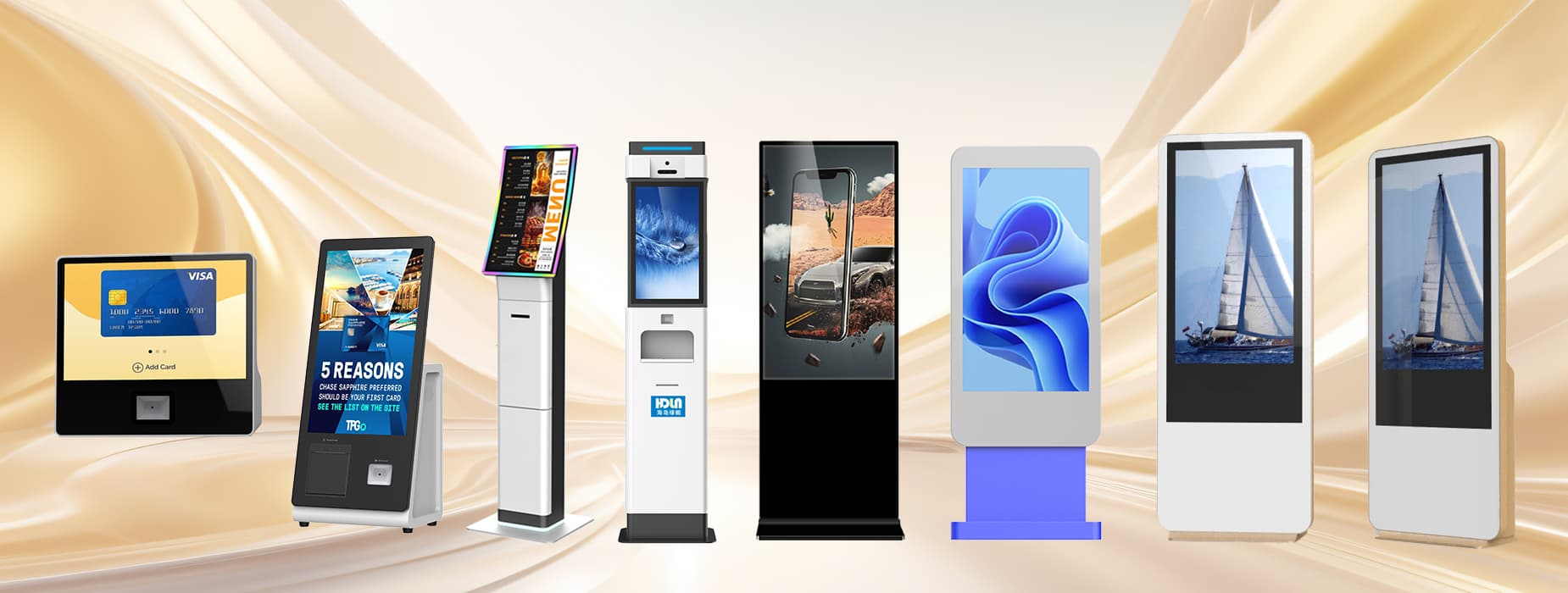
When and Where to Use a Bill Payment Kiosk
Bill payment kiosks are ideal for environments where customers need quick, self-service options to pay their bills. They are commonly found in locations with high foot traffic, such as shopping malls, utility companies, government offices, and transit stations. These kiosks are particularly useful during peak hours when in-person service counters may be overwhelmed, providing an efficient alternative that reduces wait times. They are also valuable in rural or underserved areas where traditional payment locations may be scarce, offering convenient access to essential services.
Cost of a Bill Payment Kiosk
The cost of a bill payment kiosk varies depending on features, customization, and installation requirements. Basic models may start around $3,000 to $5,000, while more advanced kiosks with multiple payment options, larger touchscreens, and enhanced security features can range from $10,000 to $15,000 or more. Additional costs may include software licensing, maintenance, and service agreements. Installation costs can also vary depending on location and setup complexity, potentially adding a few thousand dollars to the total investment.
ROI of a Bill Payment Kiosk
The return on investment (ROI) for a bill payment kiosk is influenced by factors such as transaction volume, location, and operational efficiency. Typically, businesses see a positive ROI within 12 to 24 months as kiosks reduce labor costs, streamline payment processing, and increase customer satisfaction by offering 24/7 access. Additionally, the ability to handle multiple transactions simultaneously reduces the burden on staff, allowing businesses to serve more customers with fewer resources. Enhanced data collection and customer insights also contribute to long-term financial benefits.
Applicatiosns and benefits of bill payment kiosk
| Applications | Benefits and Advantages |
|---|---|
|
|
Summary
A bill payment kiosk is a self-service machine designed to facilitate various types of payments, including utility bills, telecom charges, government fees, loan repayments, and retail transactions. These kiosks are typically placed in high-traffic areas like shopping malls, government offices, and utility service centers to offer 24/7 payment options.
The primary function of a bill payment kiosk is to streamline the payment process, allowing users to quickly and securely settle their bills without the need for in-person assistance. Key features include support for multiple payment methods such as cash, credit/debit cards, contactless payments, and checks. These kiosks also often include a touchscreen interface, receipt printing, and secure payment processing.
The advantages of using bill payment kiosks include enhanced convenience for users, reduced wait times, and cost savings for businesses through automation. Additionally, these kiosks provide increased payment channel options, improved customer experience, and valuable data collection for businesses, all while ensuring secure transactions.
Address: No. 99-15, Fuan intelligent manufacturing Industrial Park, Dayang Road, Fuhai Street, Baoan District, Shenzhen, China
- Tel:+852 59566712
- Email: frank@lien.cn
- Worktime:8:00-02:00
- Contact Person:Frank
- Mobile Site



